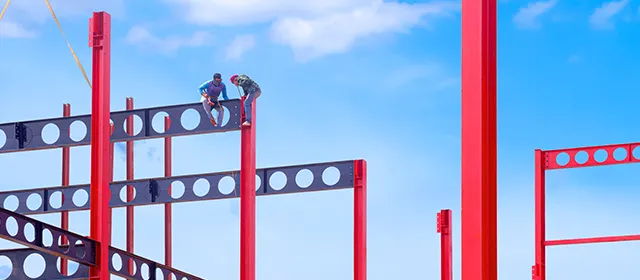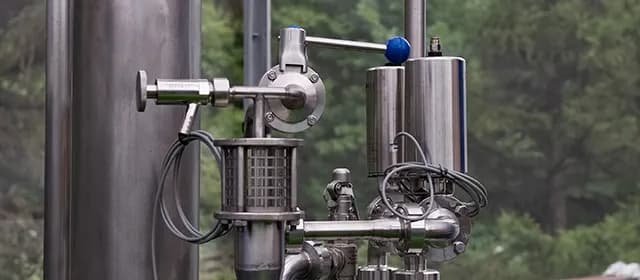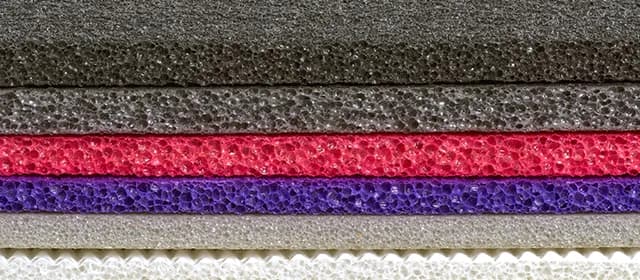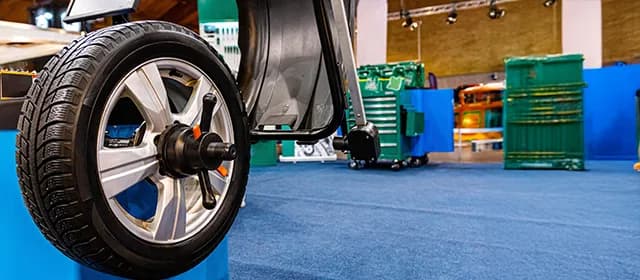Structural steel plays a central role in modular and prefabricated construction methods. These construction approaches rely on factory-fabricated steel components assembled on site, seeking benefits in speed, quality, labor savings, and sustainability. According to Kings Research, the global structural steel market is estimated to generate USD 181.37 billion by 2031. Government and industry data increasingly support steel’s dominance in prefabricated modules, particularly as codes and building regulations evolve to demand higher precision, reuse potential, and lower carbon footprint.
This article analyses how structural steel is employed in modular construction, examines technical requirements and challenges, and presents case studies of companies successfully leveraging steel prefabrication.
Why Is the Structural Steel Market Growing in 2025?
Structural steel has gained market share in modular construction, especially in North America. The modular construction industry in North America has experienced significant growth, expanding from 2.1% of new construction starts in 2015 to 6.64% in 2023 (Source: https://docs.nrel.gov/). That share reflects the strength, durability, ease of fabrication, recyclability, and tolerances steel offers for module building.
Modular construction continues growing rapidly. Global forecasts indicate that modular building methods accounted for approximately 6.64 percent of new construction projects worldwide in 2023.
Major construction companies are forming off-site manufacturing units that emphasize steel structural components. Turner Construction’s launch of the xPL Offsite division is a clear signal of steel’s importance. This division concentrates on steel material reduction, robotics for beam fabrication, and precise steel assembly. (Source: https://www.turnerconstruction.com/)
Technical Advantages of Structural Steel in Modular Methods
- Precision and Tolerance: Factory production of steel modules allows tight dimensional control. Steel components can be laser cut, machined, or robotically welded such that variances are limited to millimeters. This precision simplifies on-site assembly, reduces error correction, and allows modules to align accurately when stacked. Prefabricated steel modules can achieve tolerances such as ±1 mm in critical dimensions. That precision is difficult to achieve with concrete or timber modules.
- Speed of Construction and Assembly: Prefabricated steel frame and module components manufactured in controlled conditions eliminate many delays related to weather, curing, or labor shortages on site. Steel modules can be delivered and assembled rapidly. Reduced site time also reduces disruption, logistics costs, and safety risks. Projects using off-site steel structural modules often report 30-40 percent shorter construction schedules compared to conventional buildings.
- Lifecycle Sustainability and Recyclability: Steel is highly recyclable and retains much of its value at end-of-life. In modular steel-structured buildings, bolts and mechanical connections allow disassembly and reuse. Recycled steel content in structural steel reduces embodied carbon. Modular steel structures often permit reuse or reconfiguration, which aligns with sustainability and circular economy principles.
- Structural Performance and Safety: Steel possesses a favorable strength-to-weight ratio, ductility, seismic resistance, and fire performance when properly coated or protected. Modular steel units designed with appropriate joints and connections can meet or exceed code-required structural loads. Prefabricated steel modules often allow for rigorous quality control and testing in a factory, helping assure structural reliability in variable environmental or loading conditions.
Challenges in Using Structural Steel in Modular Construction
- Transportation and Logistics Constraints: Steel modules must be transported from the factory to the site. Size, weight, and transportation regulations impose limits on module dimensions. Oversized or overweight loads require special permits, route planning, and sometimes escorts. These logistical difficulties can erode some advantages of prefabrication if not well managed.
- Connection Design and Assembly at Module Interfaces: Connections among modules and between modules and foundations require structural continuity, load transfer, and durability. Steel connections must account for thermal expansion, differential settlements, and potential for corrosion or fatigue at joints. Proper design of bolted or welded interfaces is critical. Standards and testing to ensure joint performance are essential.
- Corrosion Protection and Coating: Steel exposed to weather, moisture, or coastal conditions needs corrosion protection. Protective coatings, galvanization, and weathering steel are common strategies. Long-term maintenance of coatings and potential re-coating or repair at joints present lifecycle cost considerations.
- Cost of Fabrication Facilities and Skilled Labor: Setting up steel fabrication facilities with robotic welding, laser cutting, heavy lifting etc, requires capital. Skilled labor for precision steel work, welding, and QA/QC is essential. In regions lacking steel fabrication infrastructure, modular steel construction may face elevated cost or supply delays.
Case Studies
1. Turner Construction and xPL Offsite
Turner Construction launched xPL Offsite to centralize its prefabrication capabilities, including structural steel components, robotics, and optimization of steel beam fabrication. In a project for a large lithium-ion battery assembly plant in Kansas, xPL Offsite delivered 2,200 linear feet of structural steel conveyance modules using prefabricated assemblies that integrated steel framing, piping, and electrical systems. This integrated structural steel prefabrication reduced on-site assembly complexity and timeline risk.
Turner’s factory in Decatur, Alabama, is being equipped with advanced steel fabrication technologies such as beam assembly robotics and material reduction automation. These investments suggest that steel module prefabrication is becoming central to their construction strategy.
2. Z Modular (Zekelman Industries)
Z Modular is a division of Zekelman Industries, a major steel pipe and tube manufacturer. The company is scaling up modular construction projects using steel structural modules. Its parent company's background in steel tube production gives it access to supply chain advantages. Z Modular’s recent projects include multiple multifamily buildings, leveraging standardized steel tube and framing components to enhance repeatability and cost control.
Z Modular’s growth reflects steel’s role in offsite construction for residential and commercial multifamily segments, where repeated designs and standardized steel structural modules enable economies of scale in manufacturing, transport, and assembly.
Regulatory, Code, and Standardization Considerations
Structural steel modular construction must comply with local building codes, structural safety, fire resistance, seismic codes, and environmental regulations. Standards bodies such as the Research Council on Structural Connections (RCSC) provide specifications on bolted steel connections (ASTM/ANSI/ISO referenced standards). Strength and fatigue of connections at module joints must comply with these standards.
Quality assurance, inspection, material traceability, and testing of steel components are necessary. Steel grade, tensile and yield strength, weld quality, bolt quality, and dimensional tolerances are among the controlled parameters. In many jurisdictions, prefabricated modules must undergo approval similar to site-built steel structures.
Environmental regulations on emissions, embodied carbon, coatings, and recycling impact steel supply and selection. Steel producers that quantify embodied carbon and use recycled content can gain a competitive advantage in markets where environmental disclosure is required.
Industrial Implications and Best Practices
- Modular Design for Steel Efficiency: Design of steel modules benefits from standardization of components, repeatable module sizes, and design optimization for load paths. Minimizing waste in steel sheet cutting, optimizing beam sizes, and using software tools for structural simulation help reduce material usage and cost.
- Factory Automation and Prefabrication Efficiency: Automation of cutting, welding, assembly, and quality control in factory settings enhances both speed and consistency. Robotic welding, laser cutting, CNC bending, and automated handling systems reduce errors and labor variability. Factories with high throughput can amortize capital investment over large module volumes.
- Supply Chain Integration and Localization: Sourcing raw steel (plates, tubes, beams) close to the fabrication facility reduces transportation cost, lead time, and carbon emissions. Local steel producers or recycled steel supply enhances sustainability. Ensuring consistency of steel material grade, supply reliability, and welding consumable quality is important.
- Lifecycle Cost and Circularity: Steel modules should be designed for disassembly, reuse or adaptability. Bolted connections rather than permanent welds at module joins enable relocation or repurposing. Use of coatings that are durable and maintainable, selection of steel alloys with corrosion resistance, and inclusion of recycled content help reduce lifecycle environmental impact.
Outlook and Future Trends
Modular steel construction is likely to expand in response to urban housing shortages, labor shortages, faster project delivery demands, and sustainability regulation. Governments promoting low-carbon buildings, prefabricated housing, and modular methods are pushing steel modular adoption through incentives or code changes.
Emerging trends include hybrid modular systems where steel structural modules are combined with lightweight panels, insulated composite facades, or integrated mechanical systems to improve energy performance. Digital tools like building information modeling (BIM), prefabrication planning, virtual mockups, and logistics optimization are becoming essential.
Steel production itself is evolving. Use of low-carbon steels (electric arc furnace with high recycled content), improved coatings, and cleaner fabrication methods will influence cost and environmental footprint of steel modular construction.
Final Thoughts
Structural steel constitutes a foundational material in modular and prefabricated construction because of its strength, precision, recyclability, and ability to support rapid, high-quality assembly. Regulatory, code, and environmental concerns are rising in importance, pushing suppliers and builders to improve standardization, material traceability, and lifecycle performance. Modular steel construction is positioned to grow markedly as demand for sustainable, efficient, and high-speed building ramps up.




